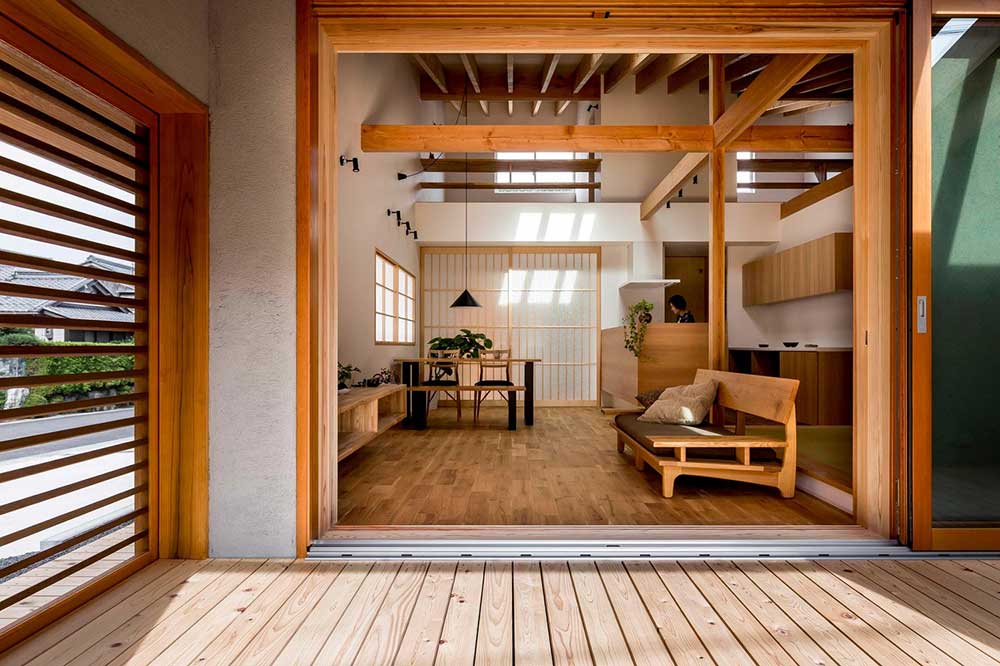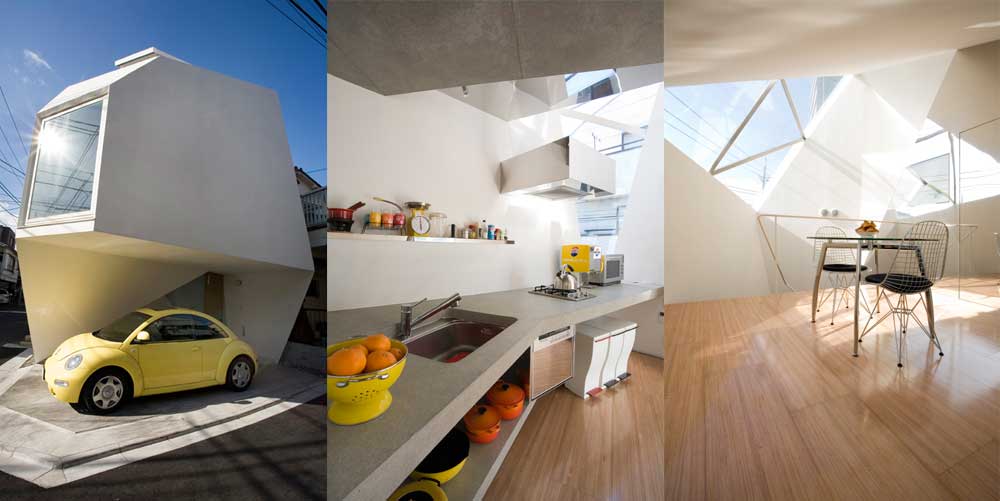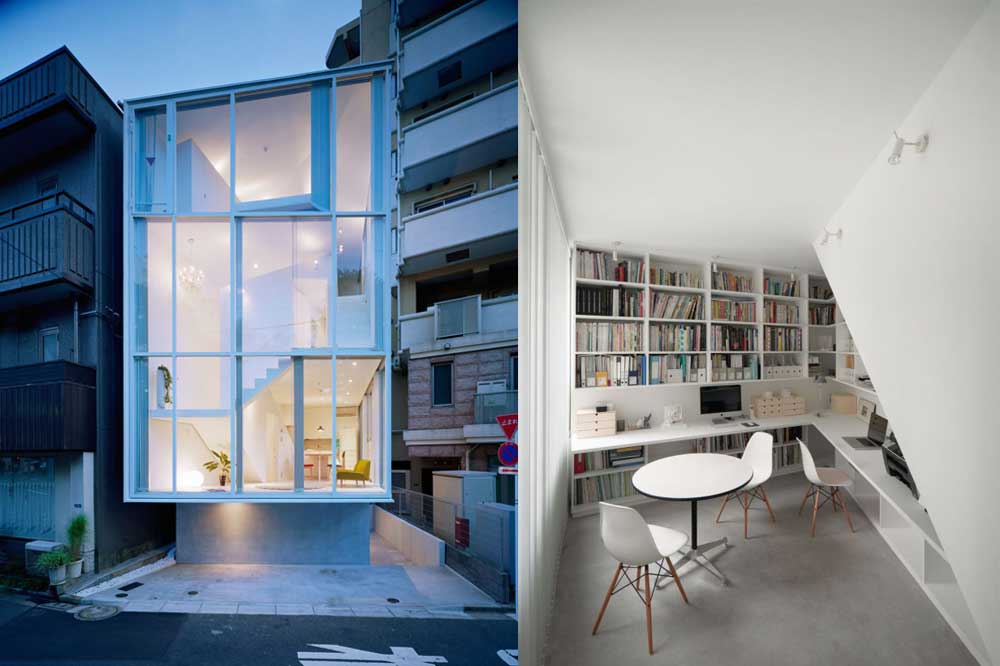
Japanese Minimalist House Ideas image source from www.hypebeast.com.
Contemporary Japanese houses are a balance between traditional values in organizing space and dynamic architectural innovation through the play of material, lighting, space and form. Japanese home design challenges various rules about how to use space and highlight minimalist “micro-living”.
“Micro-living” is a development concept that offers the suitability of space and activity in the urban environment through a variety of choices available in residential units.
The high density urban settlement environment with solid pedestrian traffic and narrow plots of land in Japan made the architect bring up some interesting layout ideas that save space and protect privacy. Strategically placed windows, curved walls, translucent panels, and hidden terraces are among the innovative tricks that are prioritized to maximize sunlight and clear sky views, maintain privacy, and make use of every available space.
By getting to know a minimalist home style in Japan, you will get to know more about how to go about your daily routine at home and find out how urban residents use the space they have. Here are some new perspectives on modern Japanese home architecture, both in terms of aesthetics, functionality, or atmosphere.
Focus on Privacy
One concept championed by Japanese architects is privacy. After the Second World War, the demand for new settlements led to the development of prefabricated concrete houses, and the acceleration of economic growth in this era attracted more people to the city than the countryside.
For example, to emphasize the concept of privacy, this Japanese-style minimalist home features a windowless front facade, but there are large windows on the back and a roof terrace overlooking the sea.
Luxury View

Japanese Minimalist House image source from smallhousebliss.com.
The design of a Japanese house in a hilly area is very prominent with its geometric pattern. Natural light, view and privacy are very important for the interior of this house. To achieve this goal, Japanese architects feature spectacular compositions of massive and void compositions and some of the best carefully chosen focus of view.
The steel structure module that covers the walls of the Japanese minimalist home by Atelier Tekuto, for example, not only creates a checkered glass pattern on the exterior walls, but also functions as a shelf in the interior of the house. Cool, isn’t it?
Open & Continuity
The main value of the style of modern Japanese houses rests on the absence of insulating walls to create a continuity of space and facilitate organic flow between interior and exterior structures. Japanese architects such as Tadao Ando, have translated this Zen concept through the use of material, geometry, and nature and open space to create close relations between the natural environment, land, and buildings without compromising privacy.
For example, the Villa in Nagano is located on a hilltop in one of the areas of Karuizawa villa, Japan. The architect designed it by utilizing the scenery on all four sides.
The four zones with four different landscapes are created by four different volumes, each at a different level and roofline, but all are connected by the main pillars and continuity is created on the roofline through various angles.
When East Meets West
Traditional Japanese Zen philosophy inspires simple natural essence found in minimalist architecture and design. Lines, shapes, space, light and material are some of the important elements that are the core of this very popular aesthetic design.
In its development, Japanese home design is also often associated with organic architecture, which is an architectural philosophy that emphasizes harmony between housing and nature. This concept is achieved through a design approach that aims to be friendly and integrated with the surrounding environment, so that buildings, furniture, and the environment become part of a composition that is integrated and interrelated. Until now, the term organic architecture is usually associated with buildings whose forms or functions mimic nature.
Space Efficiency

Japanese Minimalist House image source from karmatrendz.wordpress.com.
Utilizing a large portion of small and narrow building land in densely populated cities like Tokyo is not easy. On the other hand, the style of Japanese houses highly upholds efficiency, which appears in various ways. One of them is how to set the layout of the house to make use of every available space.
Flagpole House, a sculptural-style Japanese home design, both indoors and outdoors, created from a narrow space that is spatially challenging. Designed with a long and slim pattern in both vertical and horizontal directions, the architect team is able to maximize compact interior space for comprehensive and comfortable functionality.
Creative Material
Innovators try to reinterpret concrete as creative material. However, the balance is too often displayed by the demands of city life and some people are looking for alternative materials.
The style of modern Japanese houses by Shuhei Endo Architects, for example, is the most unusual house that overcomes steep hillside obstacles and challenges the design style. The cover layer of this structure is a roof / wall made of corrugated metal panels.
Spectacular Composition
With the emergence of cutting-edge technology, modern Japanese home styles have been at the forefront of various innovative designs. Adapting the vertical Louvre design gives a unique look to the house in Kyoto by Fujiwara Muro architects.
House K by Japanese architect Sou Fujimoto is the result of a smart approach to a land surrounded by urban settlements that are dense on three sides and also limited by trees. The house is in the shape of a crescent moon, which functions as a family residence, which stands out above the ground like a rock while changing the entire surface of the roof into a comfortable terrace area.
Built in Tokyo, this truly unique house by Sou Fujimoto Architects seems almost to resemble vertical sculpture rather than living quarters, located between more conventional houses on busy urban roads. This house has a facade that is dominated by glass walls and white metal frames, which are in geometric compositions that seem to be random so far from the privacy concept like most Japanese house styles in urban areas.
Smart Furniture
Furniture is an important element in modern Japanese home architecture that makes the room does not feel tight or messy so that it displays the beauty of the material and reflects natural light. The interior of this modern Japanese home is evidence of a minimalist Zen culture that focuses on creating space using natural light, material, and space to allow negative energy to flow through it.
To present this design, it uses various levels, angles, and contrasts between open space and comfortable angles, which reflect the sensibility and comfort of a Japanese minimalist home. Similarly, the furniture design utilizes every corner of the space so that the room looks more spacious.
Do you want to build a modern and minimalist house? Contact us now for more information.





